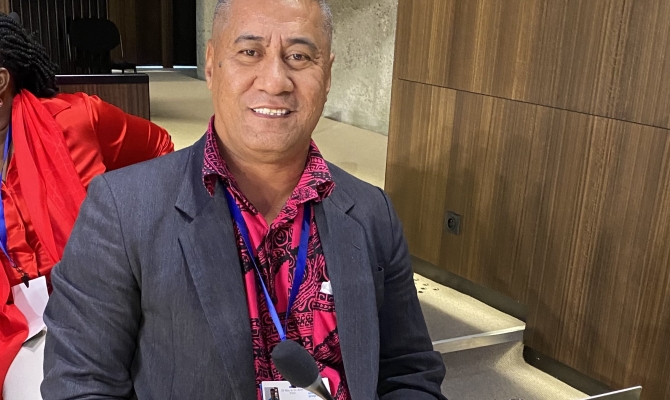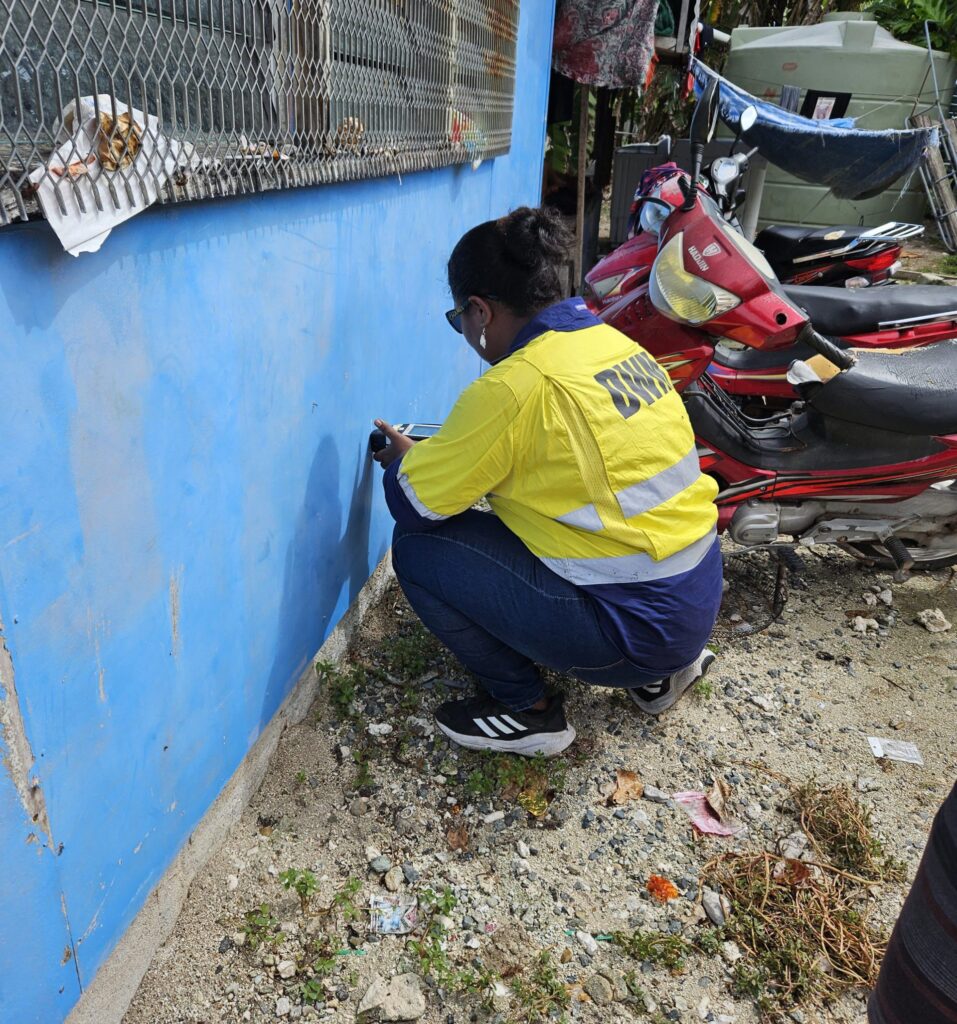News - Jul 11, 2024 Protecting Communities in Tuvalu from the threat of Asbestos

The Tuvalu Department of Waste Management (DWM) is determined to keep their communities safe from the potential hazard of asbestos though accurate data collection and assessment.
Director of DWM, Mr Epu Falega, knows the consequences of not addressing the issue and is working to do everything possible to safeguard his country and people.

“By learning the location and quantity of asbestos in the Outer Islands means we can manage the interaction with the asbestos, employ safe practices if there is any disaster situation, and make a plan for its eventual removal and remediation,” he said. “By knowing where the asbestos is we can help our communities live with it safely.”
The DWM Waste Education & Awareness Officer, Mr Siliako Letueti Alofi, who is also the Acting Operation, & Waste Auditor, has just returned from the Tuvalu island of Niu where he completed the first successful survey of all buildings to understand location of asbestos.
The assessment was undertaken using new technology, the microPHAZIR, supplied to the DWM by the EU-funded and SPREP-implemented, PacWastePlus programme. The microPHAZIR is a handheld analyser tool that enables safe, non-invasive, in-field rapid screening and identification of all six types of regulated asbestos fibres.

Mr Letueti was provided training on the use of the tool and asbestos identification and was supported remotely by experts at Hibbs Hazardous Material consultancy and PacWastePlus. “I identified and sampled all cement material on the island of Niu to confirm whether it contained asbestos or not,” he said.
“The survey covered all 148 buildings on the island, with 17 samples not able to be obtained as the material was too high up. Out of the 131 samples, 19 tests contained asbestos, including the 2 roofs of the old chapel which have been in Nui since 1925.”
Mr Letueti recorded the location and extant of asbestos found so a plan can be made for its long term management and remediation.

He also completed an awareness programme with 60 representatives from the community, including 20 men, 20 women and 20 youth, to educate the community on how to live safely with asbestos in Nui.
“The main message is that in Tuvalu the asbestos product we have is cement sheeting. This material does not pose a risk if it remains undamaged,” he said.
“If it gets damaged and fibres are exposed though cutting or sawing or grinding or by blowing over in high winds, and the fibres are breathed in, they can cause diseases such as lung cancer. The best thing for us to do in our community is to leave asbestos alone.
“Don’t disturb or cause dust. Don’t drill, saw, or grind.”


